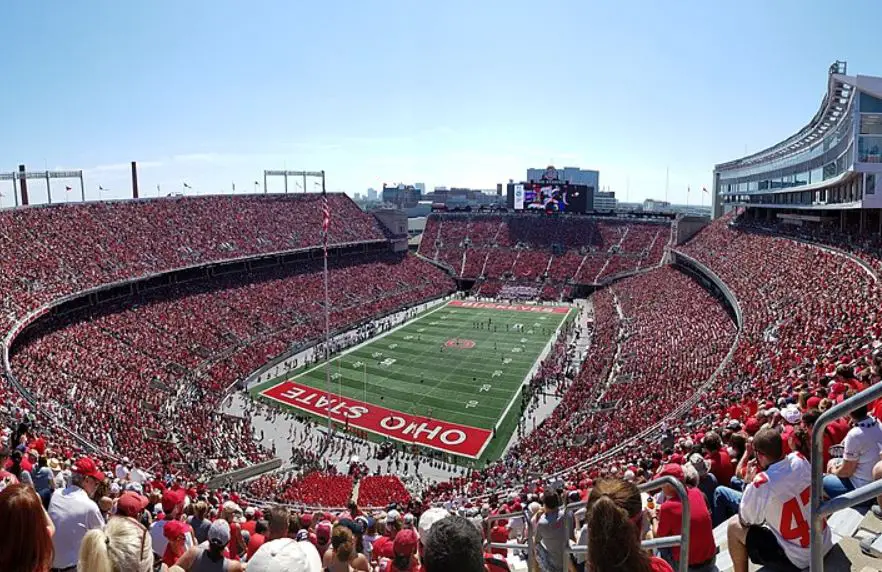One of the most amazing stadiums in the world can be found on the campus of the Ohio State University
In this post, you’ll discover the ultimate list of interesting facts about the history of Ohio Stadium, the biggest stadium in Ohio by quite some distance.
1. It’s the 5th-biggest stadium in the world by seating capacity
Ohio Stadium is located in Columbus, Ohio, on the campus of the Ohio State University. Its main purpose is to serve as the home venue of the Ohio State Buckeyes football team.
It’s also used for the university’s Spring Commencement ceremonies that happen each May and serves as the venue for concerts of some of the biggest stars in the world. Some of the artists who have performed at the stadium include U2, Taylor Swift, The Rolling Stones, Pink Floyd, Metallica, and many others!
The seating capacity of this enormous stadium is 102,780, which makes it the 5th-biggest stadium in the world and the 3rd-largest on-campus football stadium in the United States behind Michigan Stadium (107,601) and Beaver Stadium (106,572).
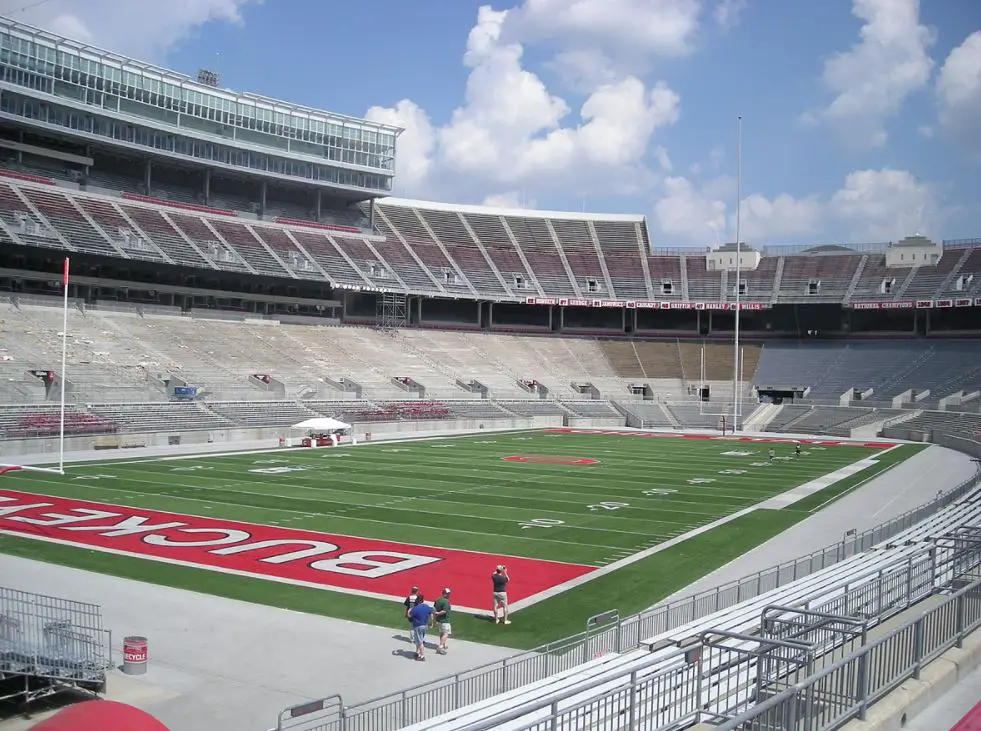
2. It used to be the venue of 2 other major sports
The stadium was completed in the year 1922 and just 1 year later an athletics track was added to it. This means that the stadium was also the venue of the Ohio State University track and field teams from 1923 until 2001 when the Jesse Owens Memorial Stadium was opened.
For a brief period between 1996 and 1998, the stadium was also used by the Columbus Crew soccer team that competes in Major League Soccer. This was until they moved to their very own Columbus Crew Stadium in 1999.
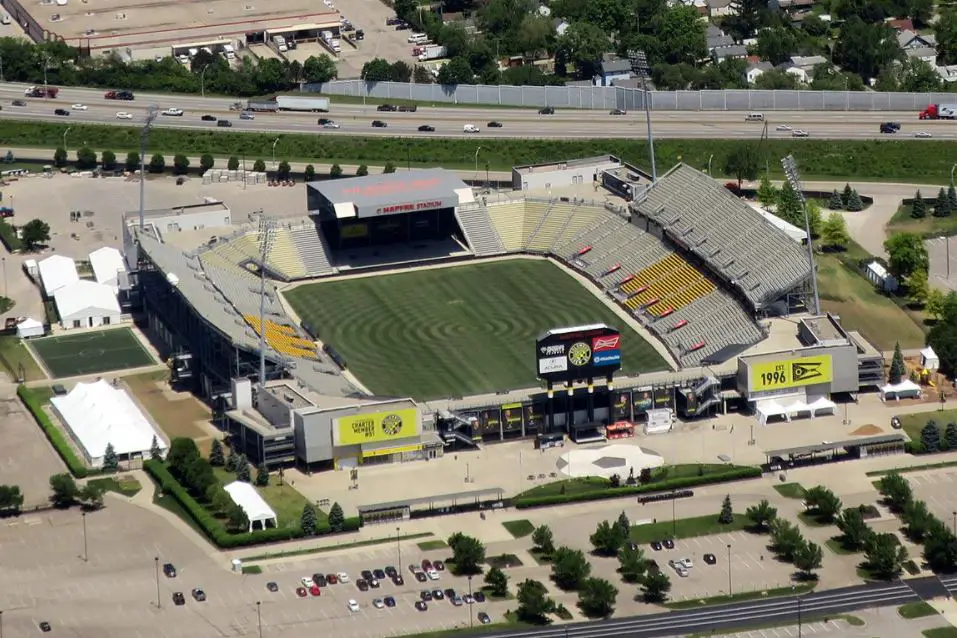
3. The stadium has a couple of nicknames
One of the most remarkable facts about Ohio Stadium is that it is shaped like a horseshoe as opposed to the bowl design of a stadium. This design also allowed the addition of an upper deck that hangs over the lower deck, giving the spectators on top a much better view of the game.
That’s why the stadium is often referred to as “the Horseshoe“, or simply “the Shoe.”
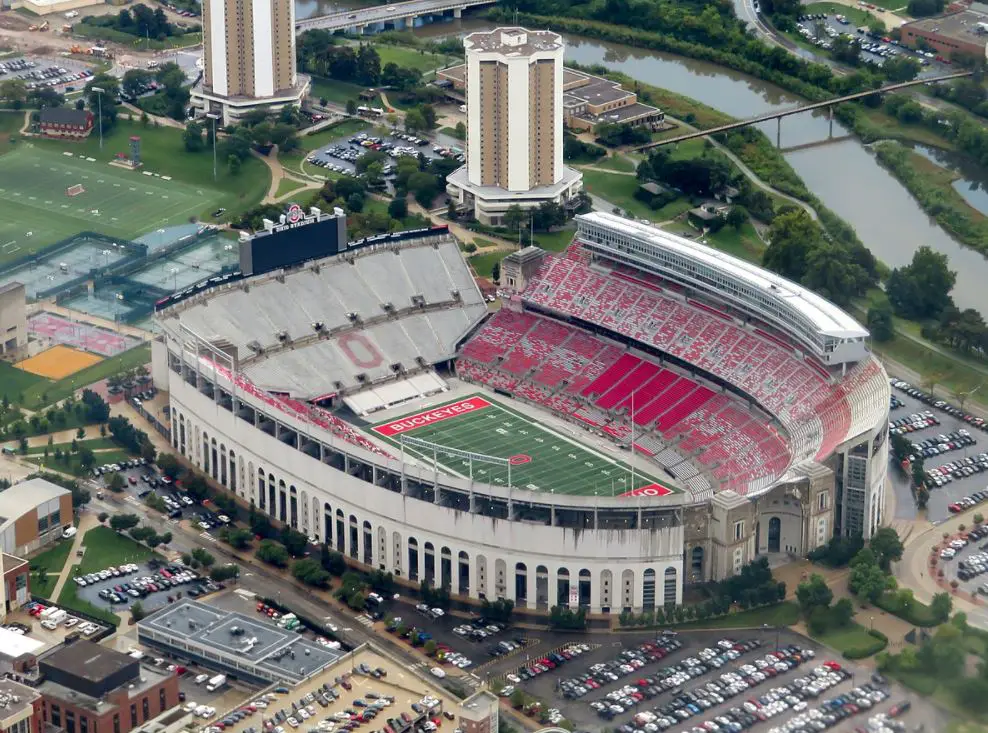
4. One of its nicknames is a reference to the stadium’s architect
Another common nickname of Ohio Stadium is “the House That Harley Built.” This is a reference to the architect of the stadium, a man named Howard Dwight Smith (1886-1958) who completed the design in 1918.
Because of the revolutionary design of the stadium at the time (at least at this scale), he was awarded the American Institute of Architects Gold Medal for Public Building Design!
After all, at the time of completion, it was the largest two-level, open-ended stadium in the world with a seating capacity of 66,210.
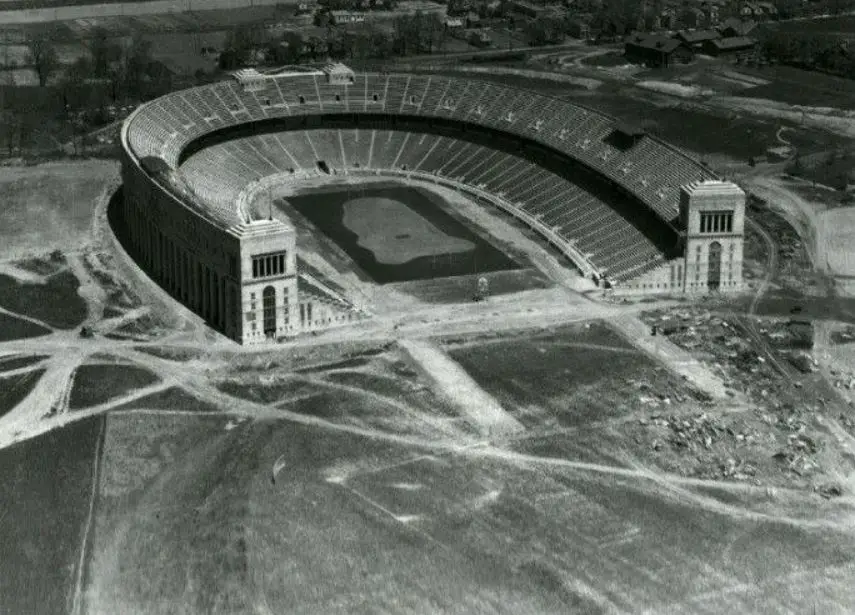
5. It replaced a stadium that was built in the late 19th century
Before the stadium was complete, the Buckeyes played their home games at a stadium called “Ohio Field,” a stadium that was located on the campus of Ohio State University as well and which had a maximum capacity of 14,000.
This stadium was completed in the year 1898 and had grown way too small for the large crowds that the local football team attracted in the early 1910s. That’s why proposals for a new stadium were made as early as 1913.
The current Ohio Stadium history started in the year 1920 when a public-subscription fundraising campaign was started that eventually raised $975,001 by January 1921.
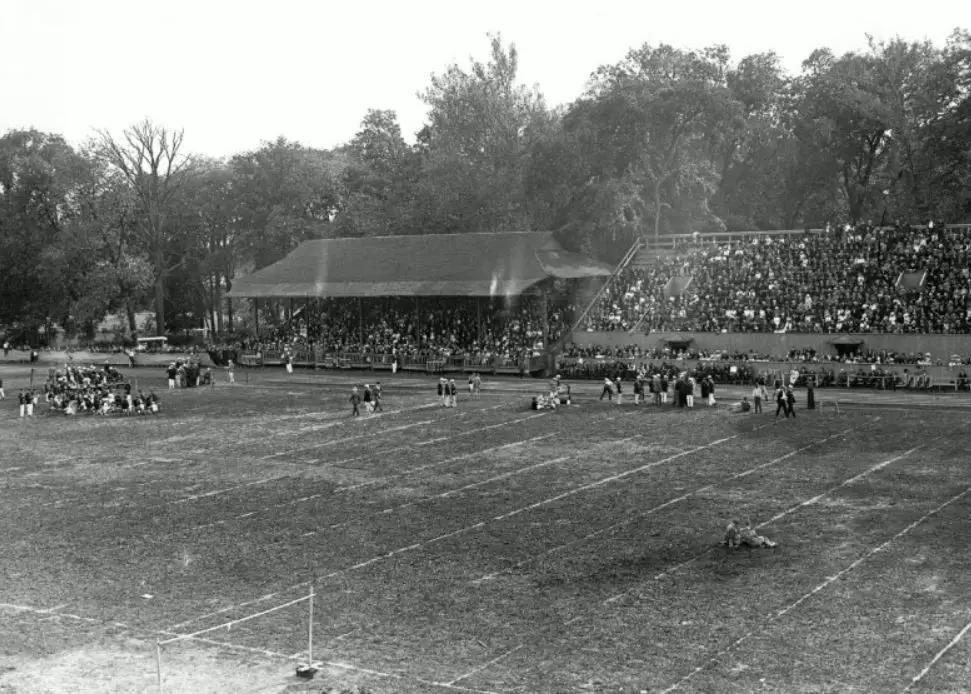
6. The stadium cost well over a million dollars to build in the 1920s
Raising $975,000 to build a new stadium on the Ohio State University Campus was no small achievement. After all, with inflation in mind, this is the equivalent of over USD 14 million today.
This wasn’t enough, though, because the construction cost to complete the stadium was eventually USD 1.49 million, which is over USD 23 million today, a huge amount of money at the time!
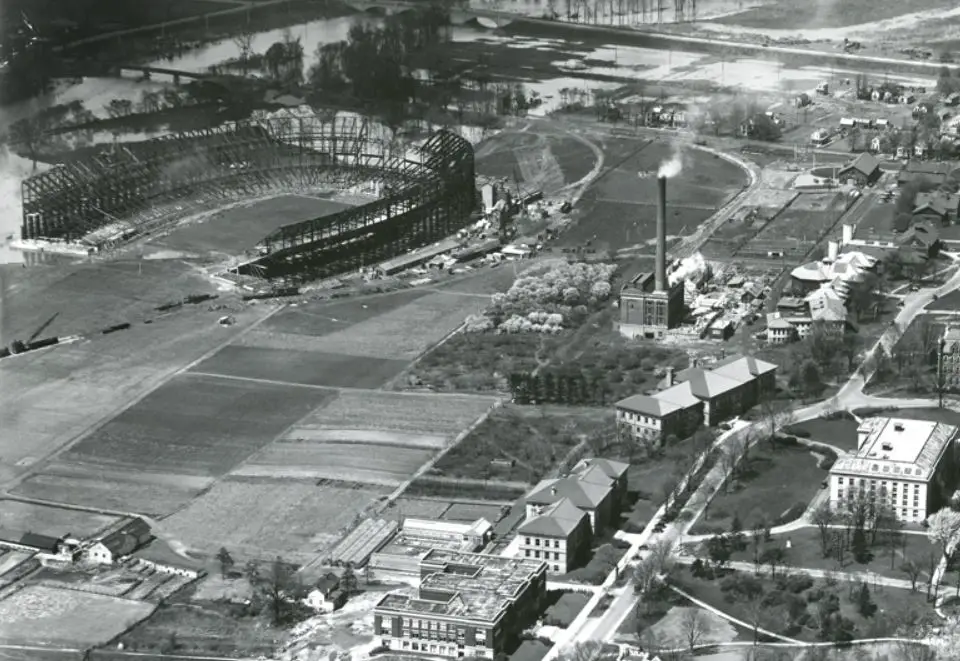
7. A particular structure was built to keep the water out
Architect Howard Dwight Smith definitely didn’t receive his prestigious reward for the stadium’s design for nothing, that’s for sure. Apart from the revolutionary design of such a huge stadium, he also had to keep in mind that the location of the stadium is situated on the flood plain of the Olentangy River.
This means that he had to integrate a structure referred to as a “slurry wall” to keep the water out.
In 1998, an additional slurry wall was built during a renovation which allowed the field to be lowered 14.5 feet (4.4 meters), something that lowered the field below the water level of the river.
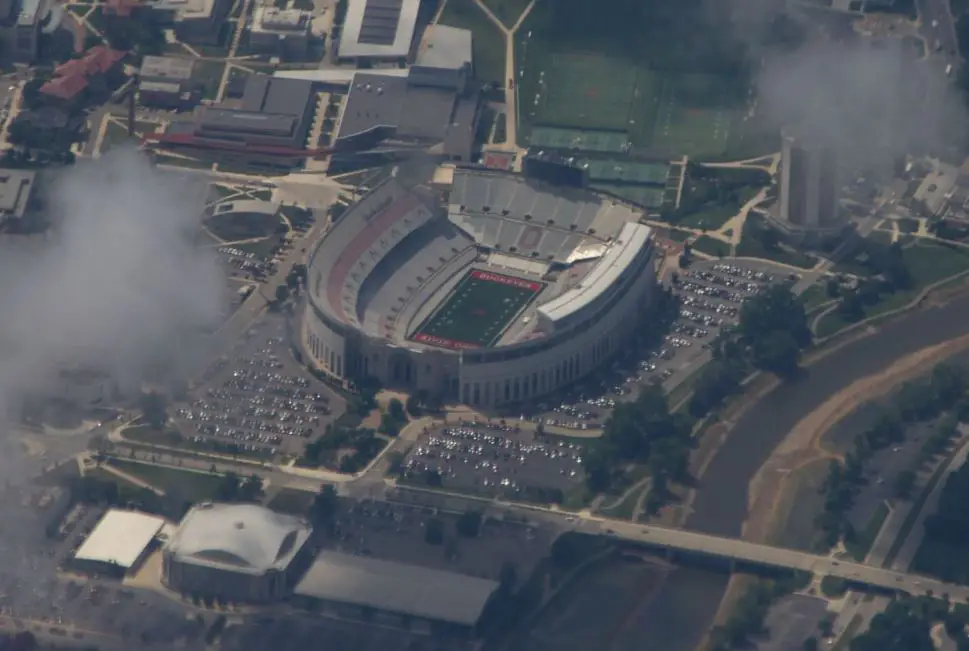
8. The stadium wasn’t a big success until after World War II
Regardless of the magnificent design of the stadium, it was initially built too big for the home crowds of the Buckeyes. The first official game at the stadium was played against Ohio Wesleyan University on October 7, 1922, and the attendance at this game was just 25,000, which means not even half the stadium was filled.
Even though it was sold out during the formal inauguration a couple of weeks later on October 21, 1922, with an estimated attendance of 72,000 for a game against Michigan, the stadium never consistently sold out until after World War II.
After this tragic event in human history, this changed and the capacity of the stadium was gradually increased so up to 91,470 could be seated by 1991.
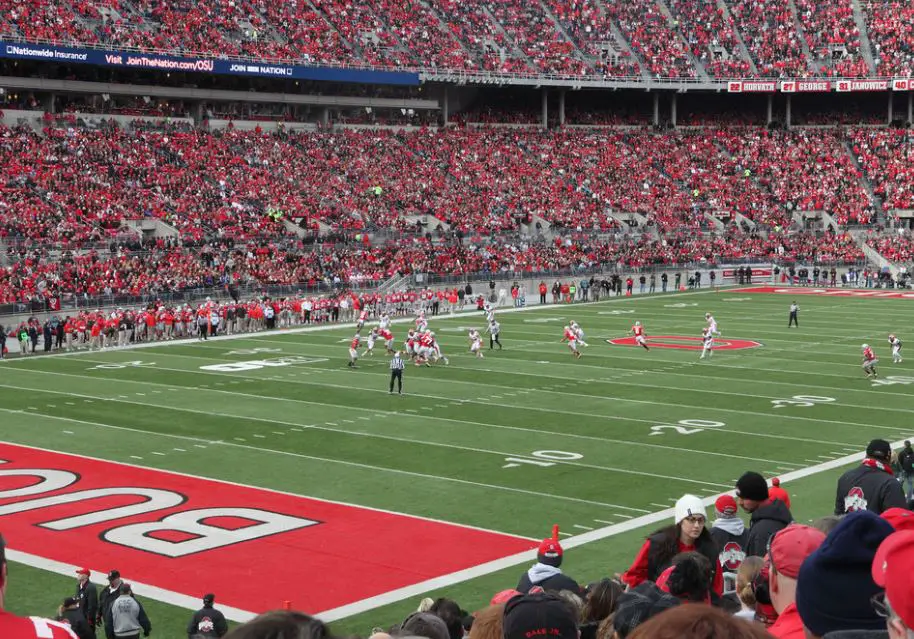
9. The biggest renovation was completed between 1998 and 2001
The biggest renovation in Ohio Stadium History took place between 1998 and 2001. Some of the changes made during this renovation included:
- Changing the press boxes.
- Adding 81 luxury suites and 2,500 club seats.
- Installing a new scoreboard in the south end zone measuring 90 by 30-foot (27.4 × 9.1 meters).
- Removing the athletics track.
After these USD 194 million renovations, the seating capacity was also increased above the 100K mark for the first time as the stadium could seat 101,568 spectators by then!
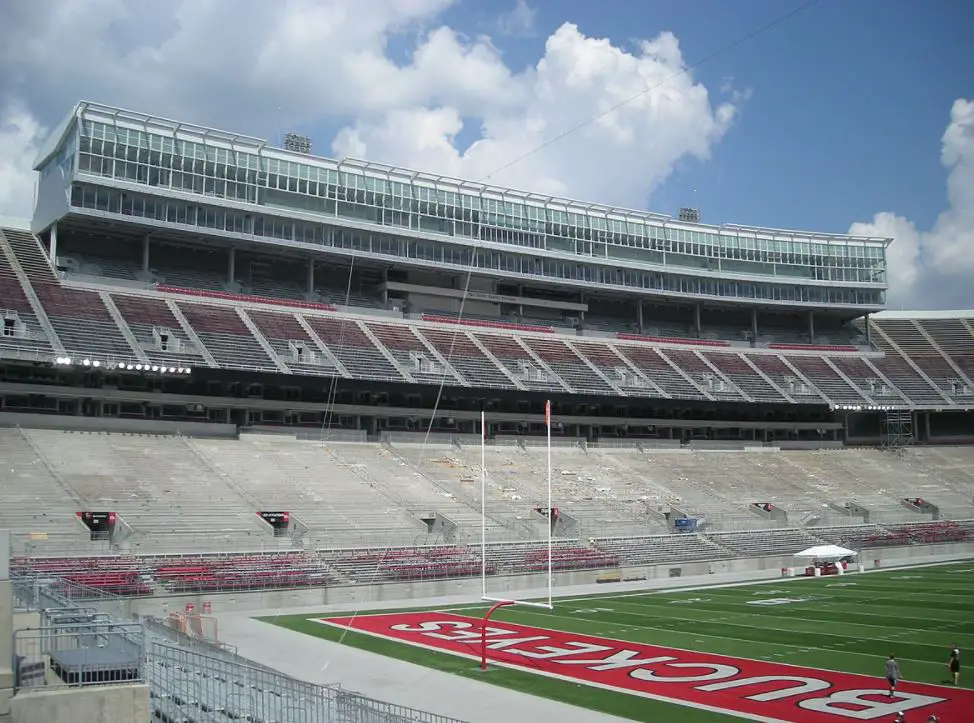
10. Ohio Stadium was added to the National Register of Historic Places
Apart from being a popular sports venue, the stadium is also considered to be a national monument because of its remarkable history and fascinating design.
That’s why it was added to the National Register of Historic Places by the National Park Service on March 22, 1974.
